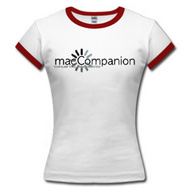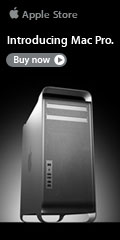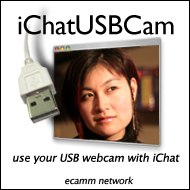The Book of Visual Basic 2005 - A Review for Macintosh Developers
by Jonathan Hoyle
|
Author: Matthew MacDonald Publisher: No Starch Press http://www.nostarch.com/vb2005.htm Published: April 30, 2006 $40 USD, $54 CAD, £28 GBP, 33€ EUR Pages: 512 ISBN: 1593270747 Audience: Beginning programmers. Strengths: Easy readability. Weakness: It's a Windows book for Windows programmers. |
|
Jon: Hey Tom, what are you working on?
Tom: Oh, just this Windows application I have to put together by Monday.
Jon: Really? But you're a Mac programmer. How did you get roped into this?
Tom: I have been building these utilities at work using REALbasic , and compiling it for both Mac and Windows. Well, the boss was pretty impressed and has asked me to create a .NET version.
Jon: Ouch. REALbasic doesn't do .NET. So what are you going to do?
Tom: I'm using Visual Basic 2005 . It's supposed to be the easiest way to create .NET applications for Windows.
Jon: That's true. So how's it coming along?
Tom: Not very well. You see, a friend of mine told me that REALbasic was modeled after Visual Basic, so I figured that the transition ought to be fairly straightforward. However, this .NET version is very different than what I expected, and I'm a bit stuck as to how to proceed. I wish there was a book on VB 2005 which was written for Mac developers.
Jon: There isn't anything exactly like that yet, but I think I have the next best thing.
Tom: What's that?
Jon: Matthew MacDonald's The Book of Visual Basic 2005 by No Starch Press.
Tom: No Starch Press...I've heard of those guys. They do that Wicked Cool programming series and the Cult of the Mac book, don't they?
Jon: Yep, those are the ones.
Tom: So why this book, instead of any of the other dozens of books on VB ?
Jon: Most of the other VB 2005 books are either written for the beginning non-programmer, or for experienced VB.NET users. This one is written for the classic VB developer, one who has experience with Visual Basic prior to the .NET days.
Tom: How does that help me?
Jon: Well, it goes back to your Mac programming experience. This friend of yours was correct in that REALbasic was modeled after Visual Basic , but not after the .NET version; it was modeled after the classic Visual Basic 6 API. So the kind of book you need is one that starts from the classic VB perspective, which is exactly what The Book of Visual Basic 2005 is all about. Here, take a look at my copy...
Tom: Hmmm, very nice. Chapter 1 covers everything about .NET without my having to wade through pages of introductory programming material.
Jon: Yeah, that's an excellent chapter. It really sets the pace for the rest of the book. Chapter 2's even better as it tours the IDE giving detailed explanations on what has changed with .NET. You can see in the diagrams what has changed, and the differences it points out are essentially what is different from REALbasic . Ten you have Chapter 3's VB 2005 Basics, which is a great reference to refer to whenever you need a refresher.
Tom: I see that each chapter begins with a section called New in .NET .
Jon: That's right. Rather than wait for a summary at the end of the chapter, the author gives you the differences right up front when the chapter begins. It makes it easier to follow when you know what to expect.
Tom: Interesting. I wonder why more books don't do that.
Jon: Most books aren't as good as The Book of Visual Basic 2005 . For example, page through Chapter 4 for a minute.
Tom: Okay...ah, I see what you mean. Chapter 4 is about forms and building the GUI, and it nicely outlines the procedure for doing so.
Jon: Chapters 5, 6 and 7 deal with object oriented programming concepts and classes. Since REALbasic already does that, you can probably read through them very quickly. But it is worth going through these chapters just to understand the subtle differences. Chapter 8 on debugging and Chapter 9 on data files should also be fairly straightforward.
Tom: Wow, this looks like it's going to be easier than I thought.
Jon: Up to this point, it should be. However, it becomes a bit more advanced beginning with Chapter 10.
Tom: Why is that?
Jon: Chapter 10 deals with ADO databases, which are quite different than the ones you use in REALbasic . Threads in .NET, covered in chapter 11, are non-trivial in any operating system, and Chapters 12 & 13 web-based programming is very different than what you are accustomed to. Then of course we have the final chapter's section on deployment. As a Mac person, you'll want to refer to this one once your ready to deliver your software. You will need to read all of these chapters a bit more carefully.
Tom: I see. Well, thanks for the tip...and the book. By the way Jon, how is it that you always happen to have the right book on hand at the right times?
Jon: Trade secret, Tom. :-)
Tom: Well, I appreciate the help. I don't want to sound ungrateful, but I have to say...I still hate Windows.
Jon: Yeah, me too. You if you have to program for it, The Book of Visual Basic 2005 is the book you want to have nearby.
http://www.maccompanion.com/archives/June2006/Books/BookofVB2005.htm
http://www.maccompanion.com/macc/archives/June2006/Books/BookofVB2005.htm










